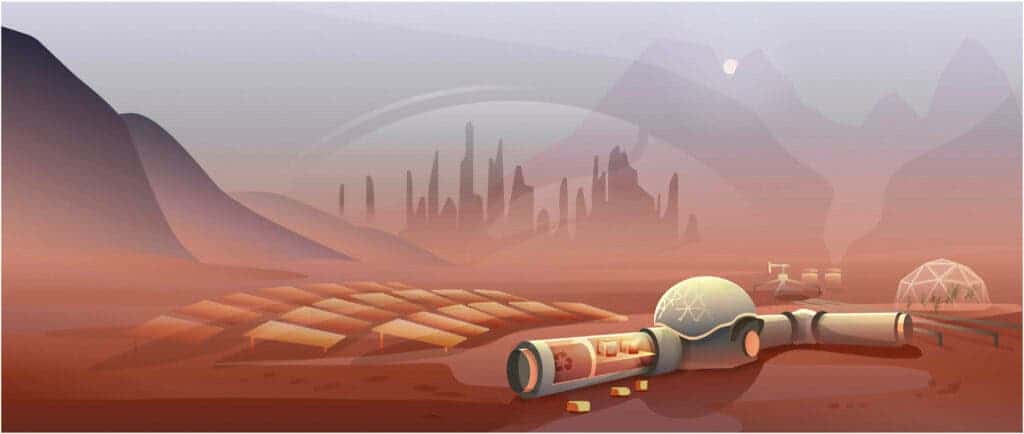If we do get to Mars and want to stick some people there, what would be the best way to power the mission? It might seem a question for further down the line, but countries are moving fast on their plans for a crewed mission to the Red Planet — which means we have to start figuring out all the big and little details of such an endeavor.
A new study now claims that solar power would be by far the best choice, even outperforming nuclear power, which had previously been suggested by most scientists and engineers. This is largely owed to recent improvements in solar energy, especially regarding the efficiency and flexibility of photovoltaic systems, which NASA has been using for years on Mars explorers such as the Spirit.
“Photovoltaic energy generation coupled to certain energy storage configurations in molecular hydrogen outperforms nuclear fusion reactors over 50% of the planet’s surface, which is in fairly sharp contrast to what has been proposed over and over again in the literature,” study author Aaron Berliner said in a statement.

Power on Mars
The researchers from the University of California compared different ways to generate power, considering the equipment that would have to be shipped from Earth to Mars for a six-person mission. Specifically, they compared the requirements of a nuclear-powered system against different photoelectrochemical and photovoltaic devices.
In the past decade, NASA has considered using nuclear fission reactors for future robotic and human exploration, describing it as a safe and efficient source of energy. On the other hand, solar has to be stored for use at night, which poses additional difficulties. Plus, on Mars, solar panels’ power outcome can be reduced by the red dust that truly covers everything there. In addition, a nuclear fission device is location-agnostic — it can be placed anywhere.
In the new study, the researchers modeled and accounted for factors that could influence the performance of solar panels. This includes how particles in the atmosphere can absorb and scatter light, which would then alter the amount of radiation available at the red planet’s surface.
As it turns out, solar is comparable to or better than nuclear in over half the Martian surface, according to the study’s findings. But this is only true if the daytime energy is used to produce hydrogen gas to power the cells, which would then be used to light up the Mars colony at night or when sandstorms occur, the researchers explained.
The solar displays would use electricity to divide water molecules into oxygen and hydrogen, with the last one placed into pressurized vessels. Then, the hydrogen would be electrified to produce power. Unneeded hydrogen could also be repurposed, the researchers said, helping in creating ammonia to fertilize plants, for example.
“The hope is ultimately to build out a full model of the system, with all of the components included, which we envision as helping to plan a mission to Mars, evaluate tradeoffs, identify risks, and come up with mitigation strategies either beforehand or during the mission,” Berliner said in a statement.
So if this study is confirmed, then we figured out what type of energy would work best on Mars. We just need to figure out everything else and we’re good to go.
The study was published in the journal Frontiers in Astronomy and Space Sciences.


